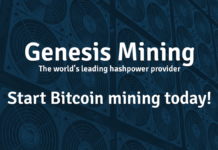The past few months have been a bit bumpier than usual for the Ethereum ecosystem. Since the start of June, Etherians have endured a flash crash, the falsely rumored death of Vitalik Buterin, and a massive hacking scandal, not to mention the bitcoin split that had cast a looming shadow of uncertainty over the entire crypto-ecosystem, likely causing valuations across the board to dip. However, the recent bleakness has begun to evaporate in the wake of bitcoin’s successful hard fork and Ethereum is once again testing its valuation growth potential, already recovering nearly half its losses from a mid-June slide at around $400 to the lowest valuation in recent history at around $150 in mid-July. Recently, Ethereum has been tracking just below the $300 barrier.

Now that things have relatively stabilized, and almost as if on cue, Ethereum creator Vitalik Buterin took to an online chat forum to address a breadth of questions and concerns from ecosystem participants who were anxious to know what’s next for Ethereum. Speaking via The Next Web, Buterin’s comments fall into two general categories: general material about crypto and blockchain ecosystems, and Ethereum-specific information. Here is what ETHNews learned from the discussion.
General Ecosystem Information
The cryptospace, as a whole, is going to be continually taking shape for the near future. Like the internet of information before it, the emerging internet of value, which is empowered by blockchain technology, will constantly be evolving as it is built. “I think right now for a blockchain project to succeed it needs to provide real value,” Buterin said in response to a question about blockchain companies becoming stagnant in their early development phases, “enough to be worth overcoming (i) the costs of using blockchain and (ii) the costs of bootstrapping a new project. In 3-5 years when blockchains are much cheaper to use, I expect we’ll see more projects using blockchains ‘just because’ it’s the most convenient platform for many kinds of things … and we’ll start to see decentralized networks emerge to take up every niche in between BitTorrent and Bitcoin. I think Ethereum with sharding can have a pretty substantial role in that future.”
Buterin elaborated upon creating real value by describing what he feels is one of the best use cases for blockchain technology: cross-border payments. “I think the initial value of cryptocurrency and blockchains for payments will not be within countries, but rather between countries,” replied Buterin. “Crypto is really great for very easily and efficiently sending money across any boarders in a standardized way, and Ethereum-style systems can extend that from just payments to more complex forms of applications and smart contracts”
Finally, Buterin’s general commentary laid out his thoughts on how the dichotomy between public and private blockchains will manifest in the future. Buterin believes that public chains have more potential in the long term, despite the shorter time period requirements for creating private chains.
“I expect in the long term we’ll see every possible combination of public and private emerge, including pure consortium chains, consortium chains connected to public chains via relays, consortium chains with fraud proofs enforced on public chains (ie. plasma and similar systems), purely public chains, and so forth. The challenge right now is to get the scalability of public chains higher, and come up with better answers for privacy challenges. Many people talk about consortium chains where data is encrypted so that only people who need to see a piece of data can see the data, though I think people who want this *really* want a combination of state channels and proof-of-existence anchoring.”
Ethereum Specific Information
Buterin’s comments about Ethereum are largely encouraging and reinforce the justification to stay excited about what’s coming. Responding to a timely question about the growing popularity of NEO in China, and how the functionality of Ethereum measures up in comparison, Buterin emphasized that Ethereum will “be optionally quantum-proof with EIP 86 and Casper because it will support any signature algorithm that the user wants to use.” Buterin also discussed the implementation of new programming languages that will be specific to Ethereum. Among these new coding types, Buterin named Viper, Bamboo, and LLL, while also stating that Solidity would continue to improve.
Buterin also discussed engine compilers and new languages. When asked if he felt that more developers would be attracted to Ethereum by creating compilers for languages already used in traditional software development, like JavaScript, Buterin replied that there are several challenges: “First of all, existing c++ and other compilers tend to output code that is really not optimized for compact code size; eg. even the simplest program outputs a file that is longer than 4kb. This is ok for computers, where storage is cheap, but terrible for blockchains, where storage is expensive. So specialized compilers are required.” Buterin further stated that Ethereum Virtual Machine executable distributed code contract (EDCC) languages need to be designed with “a particularly strong focus on security, which is not something that most existing languages care about to the same extent.” This is likely an indirect attribution of how important securing EDCCs has become in light of The DAO hack and Parity multisig fiascos.
Notably, Buterin’s most in-depth response came when answering a question about how updates work on Ethereum. Buterin admits that both the research that goes into an update and the hard fork that makes it possible are complex processes involving multiple steps. He describes the initial starting point of an idea, and how it gets built out by sharing it with other researchers and outside contributors. These ideas “often involve many iterations, thinking, writing, debating and sometimes formal proofs,” said Buterin, “Eventually the proposal becomes concretized into an ‘Ethereum Improvement Proposal’ (EIP), which is precise enough that it should include all of the information required for an implementer to implement the specification.”
During this initial stage, anyone is welcome to comment on an EIP and every two weeks, Ethereum core developers have conference calls to debate the merits of these proposals. This planning stage has the highest level of scrutiny, Buterin continued: “many proposals are thrown out, modified, split or merged several times.” Buterin’s description of this stage also showcased the strength of Ethereum’s culture. “So far we have managed to agree on every EIP,” exclaimed Buterin, “The only time anything seriously controversial was proposed was The DAO fork, and this ended up being resolved through a series of polls and votes, followed by implementation, and ultimately a chain split.”
Buterin further explained that, after a proposal has been approved, tests are written, mainly in C++ and occasionally Python. Once all major implementations have passed the scripted tests, a date is picked for a hard fork on the testnet and mainnet, usually involving a gap of several weeks between the two. From there, the new client is released with the hard fork.
Buterin rounded out his comments by mentioning that Metropolis, Ethereum’s next evolution, is currently undergoing a testing phase and should be ready in “a couple of months.” He also referred to his latest scalability project, Plasma, which will be developed alongside other scaling solutions like sharding and ZKSnarks. Casper may be further away, though it’s moving more quickly now that the proof of concept has nearly been implemented in Python.
The creator of Ethereum also took the time to answer questions on a more sentimental note. When asked how his initial vision has evolved since starting Ethereum, Buterin replied by saying the platform has moved beyond programmable money and now the consensus algorithm is developing. Perhaps the only thing that Buterin hadn’t counted on was “the large amount of industrial interest.” Buterin concluded, “The institutional participation in the community is certainly far higher than I expected.”
Our Social Networks: Facebook Instagram Pinterest Reddit Telegram Twitter Youtube







